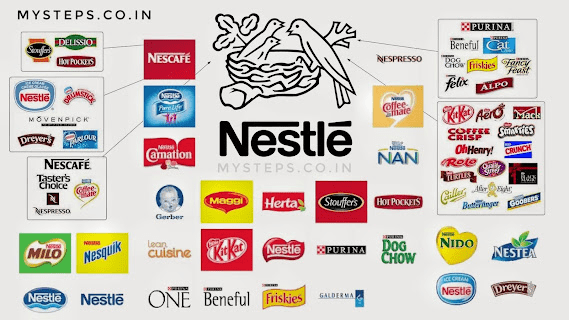
Umbrella Branding Strategy: Expand Your Brand With Guarantee of Success
Last update: 12 April 2023 at 03:15 pm
When companies launch a new product, a wide range of aspects have to be taken into account. Starting with the product, it goes on to the appearance to the target group, and finally to the brand identity.
The umbrella branding strategy encompasses all this—and more.
A Brand Says More Than 1000 Words
But before we get to the strategy, it’s worth taking a look at what the words umbrella branding actually mean.
This is the term used to describe a company’s individual brands in specific product groups.
Let’s just think of the sports outfitter Nike: while the brand offers countless products for every imaginable sport, they all come together under one umbrella brand.

Thus, whether customers buy a pair of the manufacturer’s running shoes or swimming trunks, they will always expect a certain level of quality and durability from the products.
With the mental link between product and brand, a lot of other information is conveyed to the customer. They would be too numerous to fit them all into one ad. A fresh product within the brand family is automatically associated by the customer with the advantages – and disadvantages! – of the brand.
A Company Is Not the Same as an Umbrella Brand
It is important to note, however, that a company is not necessarily synonymous with an umbrella brand.
Let’s take the Nestlé food group as an example. There are numerous umbrella brands under the umbrella (or parent brand) of the French corporation. In addition to sub-brands with a clearly defined product, such as Nespresso or Häagen-Dazs, the umbrella brand Maggi or Felix (pet food) are also part of this.
It can therefore happen that several umbrella brand strategies exist within a group. This is easy to see with the Nestlé example in particular. Although both belong to the same parent brand, no one would think of sending Maggi and Felix into the race with the same advertising messages.
The target groups are also different in both cases, although overlaps are naturally possible. What’s more, very few people are aware that the two brands are simply brand extensions under the same corporate umbrella: Nestlé.
Developments Within the Umbrella Brands
But regardless of whether the corporation itself acts as the umbrella brand (as is the case with Nike), numerous brands exist side by side: Those who want to expand the existing product portfolio of the umbrella brand cannot avoid keeping their own umbrella brand strategy clearly in mind.
The greatest of all the advantages of umbrella branding is that it makes it easier for the customer to classify the product on the market.
The so-called mental convenience is a point that can be decisive in the development of new products. This is because it means that a whole glossary of positive attributes, associated with the umbrella brand, is attributed to the new product. However, this requires that the new product fits into the portfolio of the umbrella brand.
Before undertaking any umbrella branding strategy, every conglomerate starts off with a solid brand pyramid structure which determines whether or not it is worth investing in this expansion.
Looking for |
Discover the most relevant agencies for your project based on your own specific requirements.
Find an agency!Pay Attention to Relevance
Imagine, for example, that one of your employees has a bright idea for an innovative product, but it differs greatly from your previous offering.
Instead of trying to implement it with proverbial force within your already established umbrella brand, if the new product doesn’t fit within the brand key, it is worth leaving the umbrella brand strategy untouched and instead either: launching a new brand within the company or even letting go of the idea.
In this case, an unrelated product within the same company could not only be unsuccessful, but even harmful in terms of the umbrella brand.
In fact, the transfer of the positive characteristics of umbrella branding only works if the products are logically connected to it. If they are foreign to the brand, the information is not transferred over. Thus, carrying the brand name as a marketing strategy as an end in itself does not bring any advantages.
This is unfortunately one of the biggest disadvantages of umbrella branding.
Designing an Umbrella Branding Strategy Abstractly Enough
At the same time, it is also important to note that the umbrella branding strategy is only an effective instrument if it is broad enough but still contains enough information.
Let’s stay with the Maggi example. Could you list all the products in the parent company? Or even just the product groups within it? Probably not, the brand is simply too diverse.
Nevertheless, it can easily introduce new items without too much effort. After all, thanks to the umbrella branding strategy, within which only those products are introduced that corresponds to the brand strategy, further information is conveyed with the same brand name.
It is important that the umbrella branding strategy allows room for new products. The strategy, also known as the corporate brand, must take into account the elements of mental convenience, in addition to information on the self-similarity of the products and the ability to distinguish them from other products within the umbrella brand.
Three Focal Points in Umbrella Brand Strategy
If the company’s goal is to release a new product under its own umbrella brand, it is important to plan this issue from the perspective of the umbrella brand strategy.
Staying true to oneself
Self-similarity works in two ways here. On the one hand, it means that the umbrella brand always “remains true to itself” at all times, i.e. that transported values endure over the years.
Johnson & Johnson, for example, which has positioned itself as family-friendly for decades, would probably have a hard time suddenly establishing itself as an organizer of wild parties.
On the other hand, this means that the products must always reflect these very values. These are precisely the elementary components of brand value.
Use recognition value
Furthermore, it is important that the new offering within the brand is distinguishable from the rest of the portfolio.
For example, an umbrella brand like Danone may offer more than one yogurt, but all are distinguishable after implementing umbrella branding.
Easily transferable
The last point a brand should consider is mental convenience. Thanks to this, the individual brands are put into “one basket” in the mind of the consumer.
The positive attributes of the company are transferred to the new products without any additional effort on the part of the company, thanks to a well-developed umbrella brand strategy.
The Goal Is Identifiability
No matter what strategies brands pursue, the primary goal is to be identifiable as a brand. In the case of the umbrella brand strategy, the task is more complex. Here, it is not just a question of presenting and positioning a single brand, but a large number of brands as a unified whole.
Brands that succeed in this can gain great advantages, especially in terms of diversification. Examples such as Nivea show how brands can expand their product portfolio and still operate as umbrella brands.
Choose Names Well
If your company is on the borderline between a family or individual brand and an umbrella brand, you should exercise caution when choosing a new brand name.
After all, you should choose names that will work for new products later on. Similarly, it is essential that the brand identity is formulated in such a way that it is as broad as possible and as precise as necessary. It will never be feasible to address all potential consumer groups at once. But a concise brand name and a well-formulated brand identity will facilitate the subsequent integration of new products.
Complex Task
Developing one’s own umbrella branding strategy requires expertise in brand management and, above all, a broad knowledge of marketing.
While managing a company requires qualities such as leadership, knowledge of production processes, and knowledge of the market, other strengths are considered relevant when creating the umbrella brand strategy.
Here, design, industry knowledge, but also technical know-how are crucial. Depending on the size of the company, it may make sense to engage specialists. If the family brand is to become a nationally known name, it may be worthwhile to call on professional help.
Even if additional products are to be added to the individual brand, such goals can best be realized with a team of professionals. After all, the right branding is the key to long-term success as a company with a broad product portfolio.







